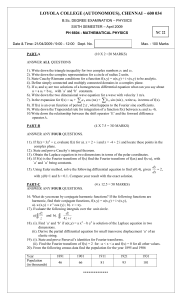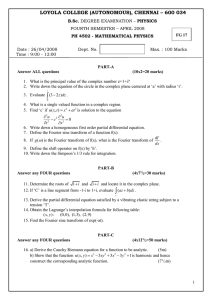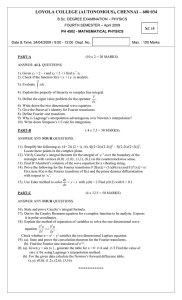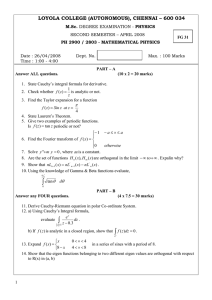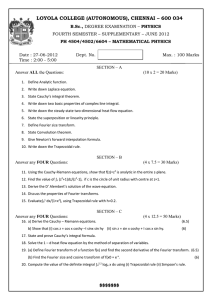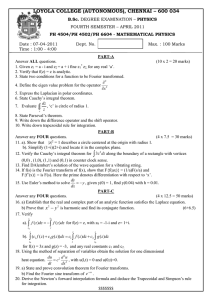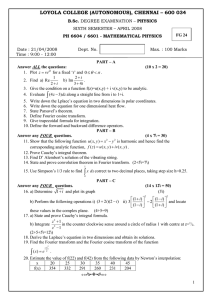Document 15511021
advertisement
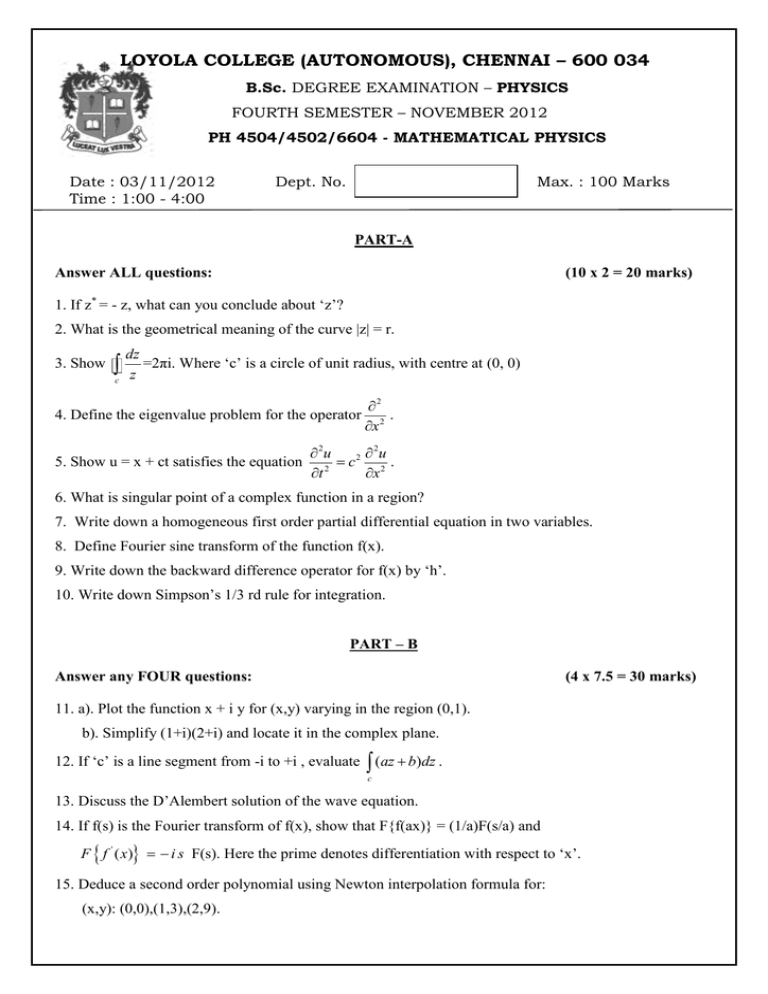
LOYOLA COLLEGE (AUTONOMOUS), CHENNAI – 600 034
B.Sc. DEGREE EXAMINATION – PHYSICS
FOURTH SEMESTER – NOVEMBER 2012
PH 4504/4502/6604 - MATHEMATICAL PHYSICS
Date : 03/11/2012
Time : 1:00 - 4:00
Dept. No.
Max. : 100 Marks
PART-A
Answer ALL questions:
(10 x 2 = 20 marks)
1. If z* = - z, what can you conclude about ‘z’?
2. What is the geometrical meaning of the curve |z| = r.
3. Show
c
dz
=2πi. Where ‘c’ is a circle of unit radius, with centre at (0, 0)
z
4. Define the eigenvalue problem for the operator
5. Show u = x + ct satisfies the equation
2
.
x 2
2
2u
2 u
c
.
t 2
x 2
6. What is singular point of a complex function in a region?
7. Write down a homogeneous first order partial differential equation in two variables.
8. Define Fourier sine transform of the function f(x).
9. Write down the backward difference operator for f(x) by ‘h’.
10. Write down Simpson’s 1/3 rd rule for integration.
PART – B
Answer any FOUR questions:
(4 x 7.5 = 30 marks)
11. a). Plot the function x + i y for (x,y) varying in the region (0,1).
b). Simplify (1+i)(2+i) and locate it in the complex plane.
12. If ‘c’ is a line segment from -i to +i , evaluate (az b)dz .
c
13. Discuss the D’Alembert solution of the wave equation.
14. If f(s) is the Fourier transform of f(x), show that F{f(ax)} = (1/a)F(s/a) and
F f ' ( x) i s F(s). Here the prime denotes differentiation with respect to ‘x’.
15. Deduce a second order polynomial using Newton interpolation formula for:
(x,y): (0,0),(1,3),(2,9).
PART-C
Answer any FOUR questions:
(4 x 12.5 = 50 marks)
16. Deduce the Cauchy Riemann conditions in polar coordinates for complex function, to be analytic and
establish that analytic function satisfy Laplace’s equation.
17. a). State and prove Cauchy’s integral formula
b). Verify the Cauchy’s integral theorem for
zdz , where c is a circle of radius 1.
c
18. Discuss the solution of the two dimensional Laplace equation.
19. a). State and prove convolution theorem for the Fourier transforms.
b). Find the Fourier sine transform of e ax .
7
20. For the following data evaluate
f ( x)dx
by (i) Trapezoidal rule,
1
(ii) Simpson’s 1/3 rd rule.
(x, f(x)): (1, 2.105) (2, 2.808) (3, 3.614) (4, 4.604) (5, 5.857) (6, 7.451) (7, 9.467).
$$$$$$$
